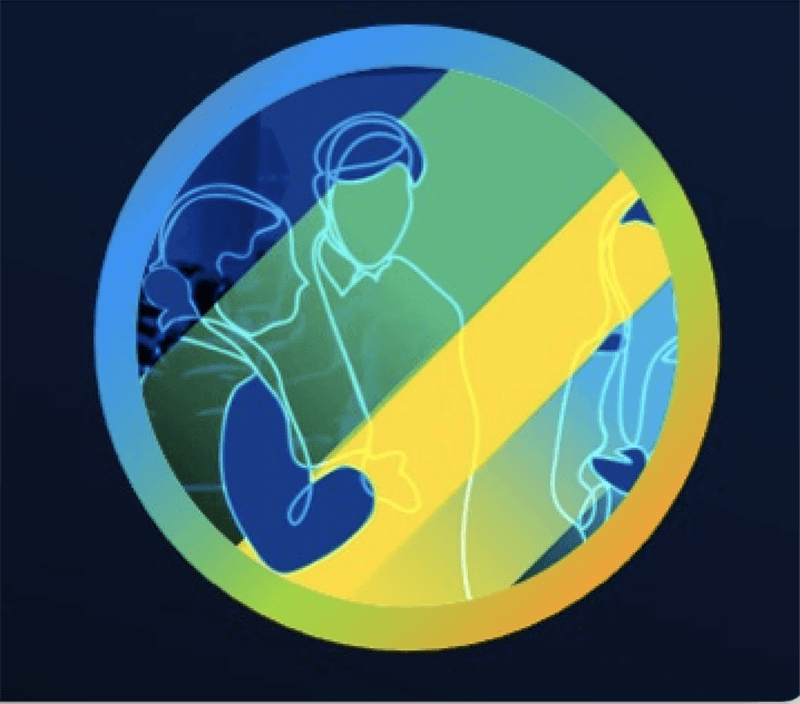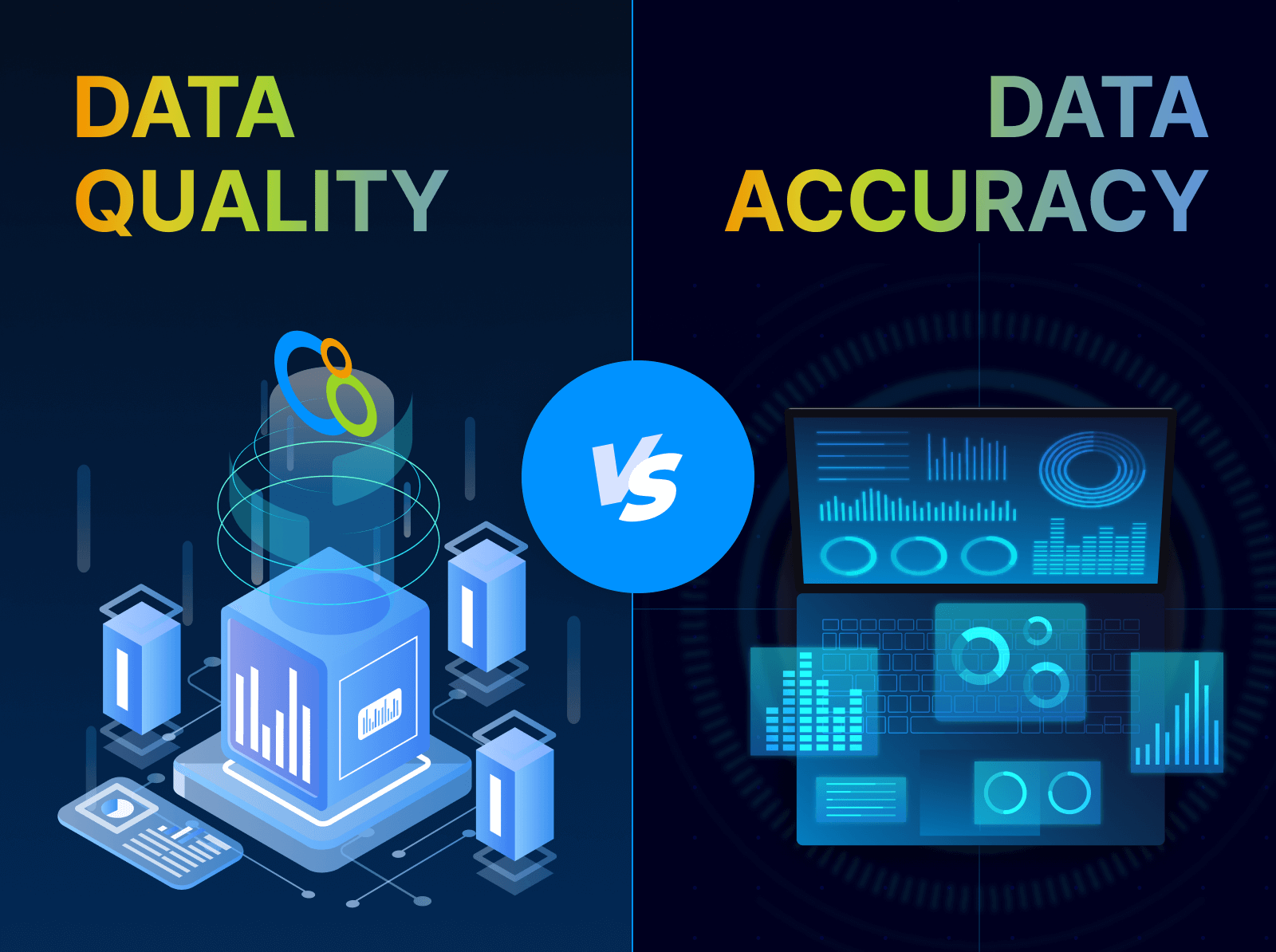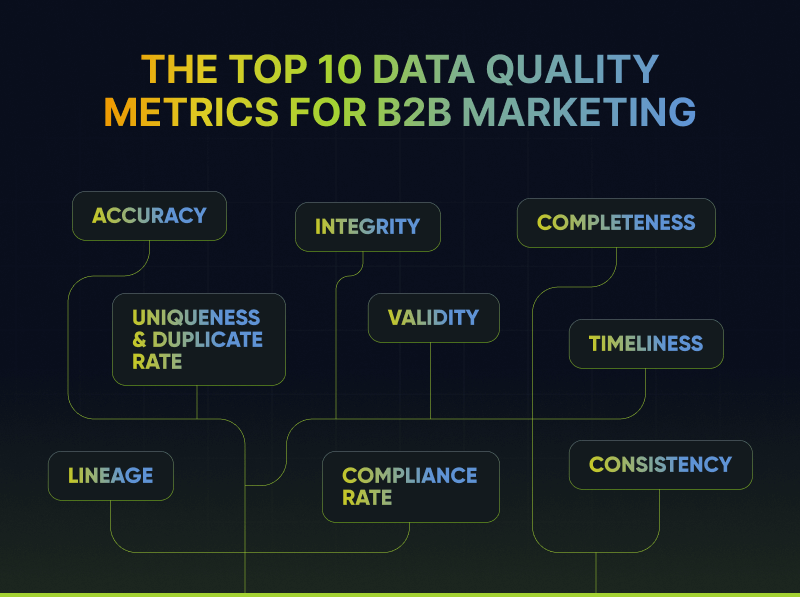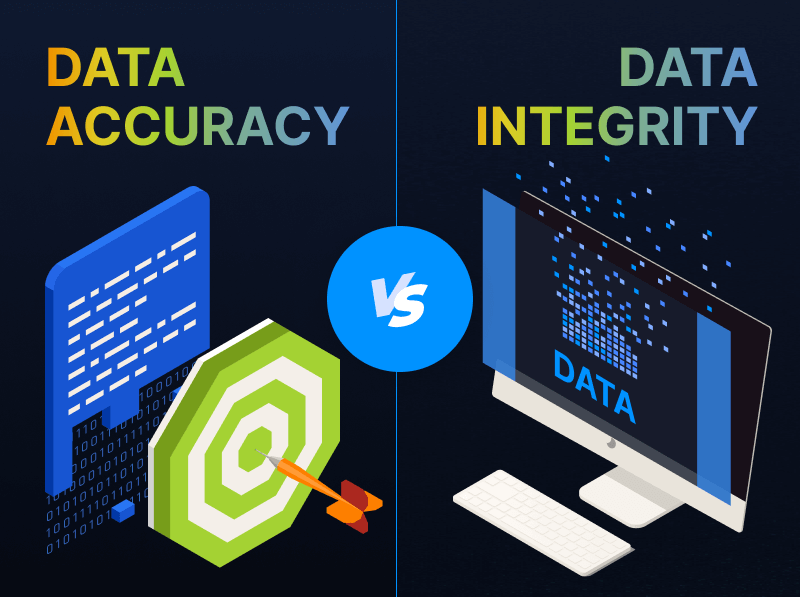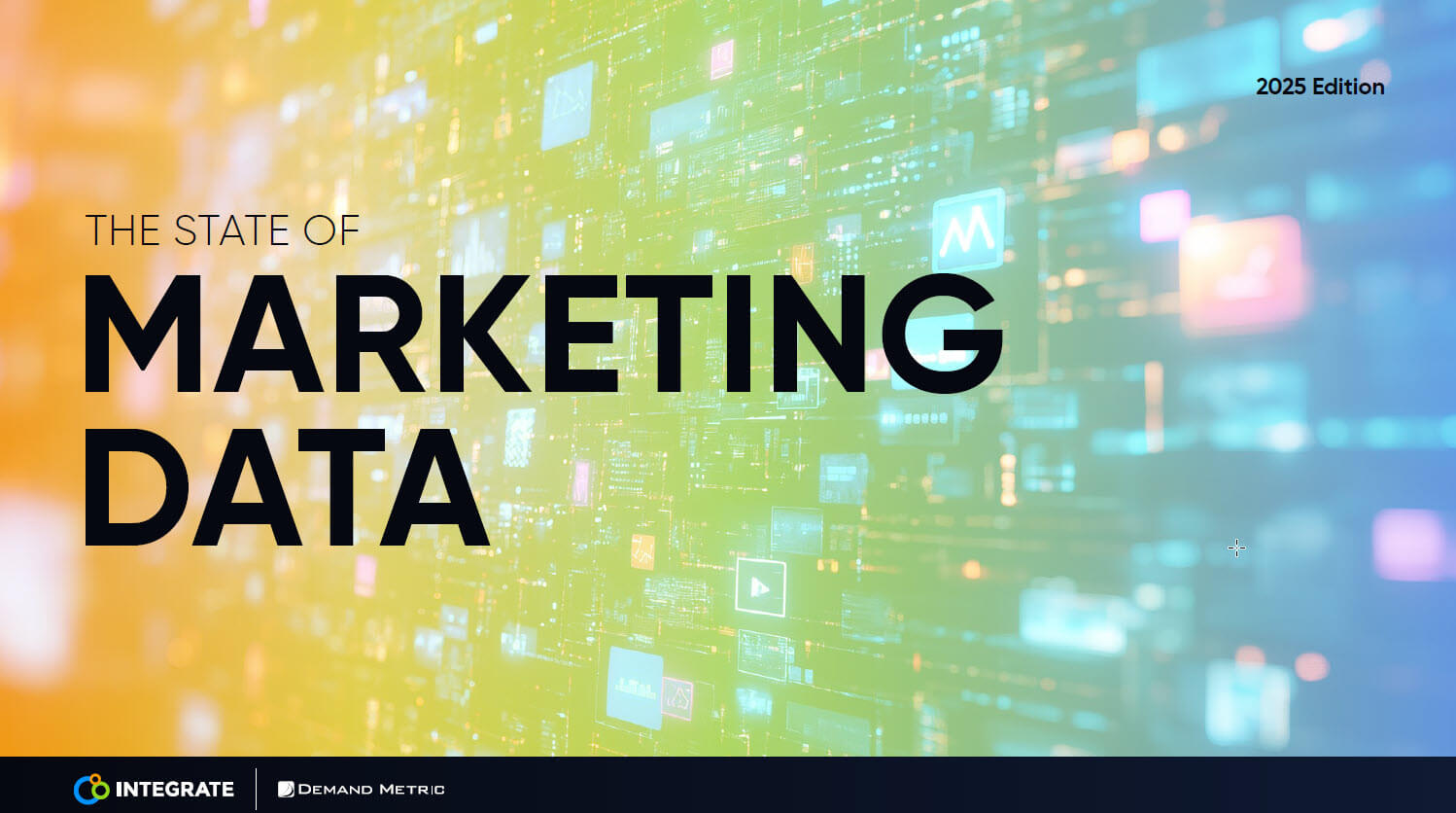Forrester B2B Summit 2023 Recap: Be Customer-Centric, Simplify & Focus, and Embrace AI
Forrester B2B Summit has always been one of our favorite conferences to learn, connect, and grow. We’ve attended the conference for years – including when it was SiriusDecisions Summit – and we even have a former Forrester analyst on staff.
This year, much of the conversation centered around how to do business in today’s economic climate, as well as how to navigate the complexities of generative AI. With budget cuts, headcount reductions, and reduced resources all around, B2B marketers are increasingly tasked with doing more with less. In fact, according to our 2023 State of B2B Marketing Budgets Survey, 38% of B2B marketers are reporting budget cuts, 40% are experiencing headcount reductions, and 65% are experiencing burnout. Add to that the prospect that robots are coming for our jobs, and it’s clear that B2B marketing is not for the faint of heart.
What did we learn about the 2023 marketing trends? In an uncertain environment, we all want certainty. Certainty in pipeline, in revenue, and in the tried-and-true tactics that work. But it’s also important to explore new ideas and keep up with innovations and changes as the world shifts. Below are three key themes that emerged.
Customer obsession is more important than ever.
Forrester has been championing customer obsession for some time now – and for good reason. Customer obsession means putting the customer at the center of your leadership, strategy, and operations. And in an era where our B2B buyers are acting more like B2C buyers, economic headwinds are tightening purse strings, and there is more information at our fingertips than we know what to do with, it’s imperative to align marketing, product, and sales around buyer value to propel growth.
Forrester analyst, Katie Fabiszak said in a keynote, “B2B companies that focus on value for the customer will stand out and grow faster.” It’s about value FOR the customer, rather than the value TO the business.
To that end, Forrester introduced a new B2B customer-obsessed growth engine to help marketing, product and sales executives align on a better path forward. Forrester analyst, John Arnold said, “When companies are struggling, they get all these silos and focus on internal processes. They try to meet their quarterly numbers by squeezing the lemon to get more out of their buyers. But real growth looks like the fundamentals done really well.”
Simplify and focus on quality over quantity.
In a keynote at Forrester B2B Summit, Dara Treseder, CMO at Autodesk said, “Do fewer things, bigger, and better…we have a chance to show up in a more thoughtful light.” In another keynote, Cynthia Matos, VP, Marketing Transformation & Agility Leader at IBM and Patty Foley Reid, Global Campaign Program Leader at IBM shared that IBM went from 23 campaigns to 5 campaigns and achieved 12% growth in revenue. They drove change in small, consistent increments and focused on progress over perfection.
The advice was clear: it’s quality, not quantity. Prioritize productivity. Simplify your marketing efforts but make those efforts more impactful.
The same goes for technologies. ABM and Demand are converging and that has implications for both strategies and technologies. Our customer, Sophia Agustina, Global Demand Strategy at IBM, and our VP of Global Campaign Strategy, Marcia Trask presented on this convergence.
Their takeaway? B2B marketers need to rethink their demand journey framework toward an account-based focus. They need to move to a single account-centric platform. Here is Sophia’s framework that she developed for the demand marketing maturity journey:
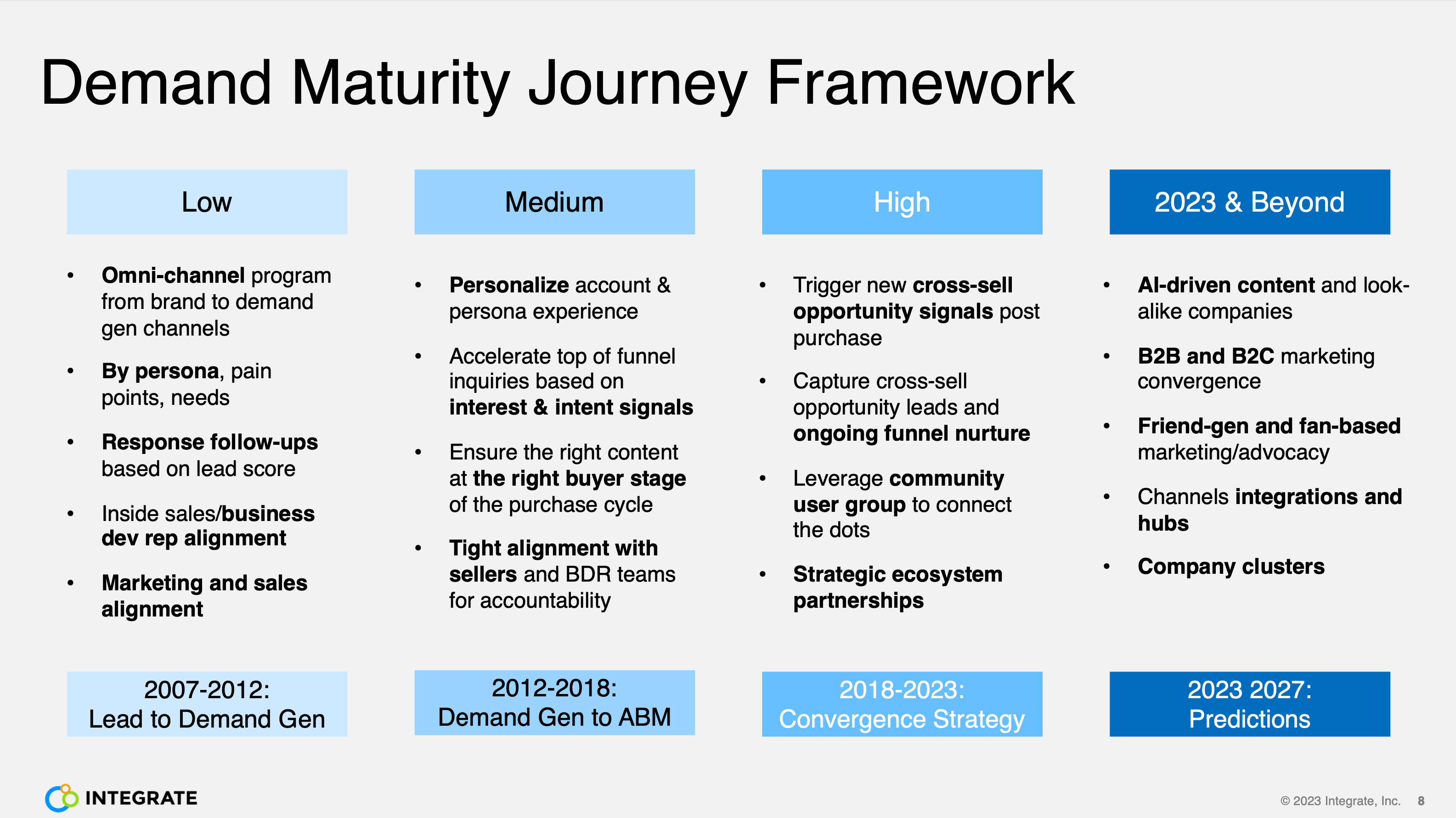
AI is here and we’re all excited and terrified at the same time.
In the opening keynote, Forrester CEO, George Colony painted a stark picture of the future: “Websites will be gone. Google will be gone. It will just be a prompt line and generative AI summarizing a big pile of data.” Yet Colony also offered advice, sharing that in these early days of generative AI, the B2B CMO will need to be the point person on AI and how it affects customers and feeds customer obsession.
No doubt, AI is here to stay and there is enormous potential to incorporate it into our B2B marketing strategies to help our customers succeed. Generative AI offers the ability to drive iteration and ideation at scale. It’s a great starting point, but like most technologies, it’s only as good as the information you feed it and the guidance you give it. It’s up to us as B2B marketers to parse the good from the bad, use it responsibly, and to remember to keep our customers front and center.
Moving toward certainty.
If there’s one thing to take away from Forrester B2B Summit, it’s that it’s never been a better time to pause, reevaluate, and refocus. We live in uncertain economic times with ever-changing buyer preferences amidst uncertain new technologies that are bound to change the course of B2B marketing. The way forward will be to keep our customers’ needs in mind as the world shifts and evolves. For B2B marketers, it’s the only certainty we have.
